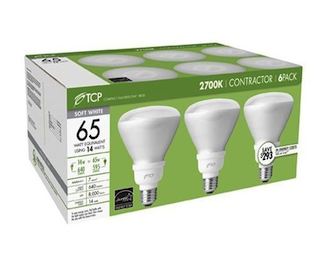CFL Lights
The majority of light bulbs in use today in the U.S. are still based largely on the original incandescent design, which was invented well over a hundred years ago. New technologies, such as compact fluorescent light bulbs (CFLs) are starting to make inroads in replacing incandescent bulbs as part of a more energy-efficient future.
While the incandescent bulb helped light the dark nights and pave the way for the creation of the modern civilization we live in today, from an energy standpoint the incandescent light bulb is incredibly inefficient.
Creating their light by heating a filament with an electrical current, incandescent bulbs do have a warm, inviting light. Unfortunately, 90% of the energy consumed by an incandescent bulb is emitted as heat, rather than light. Therefore, a large amount of electricity is necessary to produce usable amounts of visible light.
As we all become more concerned about energy usage, air pollution, and climate change, the way we light our homes is changing in dramatic ways. While the CFL bulb has been on the market for a couple of decades now, only in the past several years have they started to enter the mainstream light bulb market.
Let's take a look at some of the reasons why CFLs were so slow to catch on, but are still a wise choice for energy-efficient lighting in today's homes.
CFL Lights: A Short History
CFLs create light differently than incandescent. Rather than heating an element, in a CFL an electric current is passed through a glass tube containing argon gas and a small amount of mercury vapor (more about mercury a little later). This generates ultraviolet light that excites a fluorescent coating (called phosphor) on the inside of the tube, which gives off a visible light.
The benefit of this fluorescent type of lighting is that it is much more efficient than incandescent lights. CFLs use approximately 75% less energy than incandescent while producing similar levels of light. This energy efficiency is the CFL's main selling point. The reduction in energy usage can result in significant reductions in a home's overall energy usage if most lighting is changed over to CFLs.
Another huge advantage of CFLs over incandescent bulbs is their longevity. The lower temperatures and energy usage of CFLs lengthen their life-span considerably. A CFL is capable of lasting 6 or 7 times longer than incandescent bulbs.
The Early Days of the CFL Lights
If CFLs are so energy-efficient, why has it taken so long for them to start catching on with the public? There are several reasons, but luckily most of the reasons early CFLs weren't very popular have been dealt with and changed.
- Cost: Early CFLs, like most brand-new technologies, were rather expensive, especially compared to incandescent bulbs. Early bulbs cost $40 or more, which was understandably more than most reasonable people were willing to spend to replace a $1 incandescent bulb. Even with the big reduction in energy use, the high cost of CFLs made them not very cost-effective.
- Buzz!!: Older CFLs used large, heavy magnetic ballasts, which created a buzzing sound that many found to be extremely annoying.
- Flicker!!: The same magnetic ballasts that caused humming in older CFLs also had a tendency to create a subliminal 'flickering' effect that some people could see, contributing to headaches and eye fatigue.
- Size: While today's CFLs are small enough to fit just about anywhere a traditional light bulb can go, early CFLs were quite a bit larger. This made tot big for many lamps and fixtures.
Part Two of our CFL discussion will look at how these issues have been addressed, and why CFLs should be a part of any green home's overall lighting solution.
We will also look at the variety of CFL bulbs available today, the different types of light quality available, and investigate whether you need to worry about the mercury every CFL contains.
comments powered by Disqus


























































































































































































